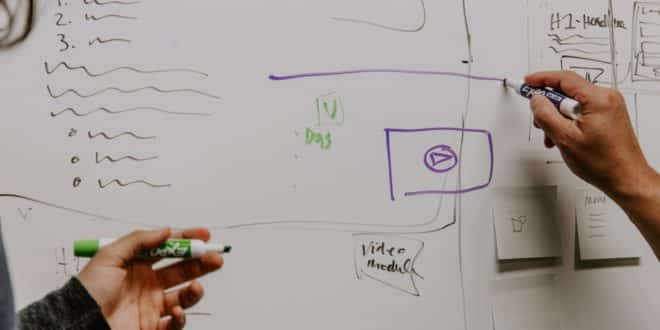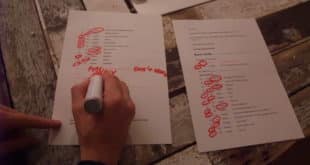A template is a predesigned document you can use to create documents quickly without having to think about formatting. Here is a list of templates international development and aid professionals frequently use in their work.
Budget template: the Budget represents the conversion of project activities into monetary values. It is essential that there is coherence between the descriptive project and the budget. Both project documents need to be carefully reviewed to ensure that they say the same thing, the narrative using the words, the budget using the numbers.
Concept note template: the concept note is the summary of the project proposal that some donors ask for in order to assess whether or not they are interested in funding the proposal. If they are, they ask for the full proposal to be submitted. The concept note should contain the main elements of the proposal in order to explain its scope in a few pages.
Delivery audit template: It is a table that allows you to have a record of the materials that have been delivered throughout a project to avoid fraud or theft. It has the structure of a matrix that answers 4 W questions: to whom and what has been delivered, where and when. With this register, it is more difficult to lose track of what has been delivered.
Job description template: The job description is used to write down the functions and responsibilities related to each job. The job description details the mission and objectives to be achieved with the organization’s strategy. In addition to the knowledge, personal qualities, skills and attitudes recommended for people applying for the position.
Logframe template: The Logical Framework is a method for the strategic planning of projects, which allows to organise in a systematic and logical way the objectives of an intervention and their causal relationships; to identify and define factors external to the project that may influence the achievement of the objectives; to evaluate the progress in the achievement of these objectives, as well as to monitor the project in all its stages.
Monitoring & Evaluation Framework templates: The M&E framework is an instrumental to monitor implementation, track progress and identify learnings. One of the first steps to developing a monitoring and evaluation framework is to clearly identify the result to be achieved and the accompanying activities, outputs and outcomes.
Memorandum of Understanding (MoU) template: The MoU is an agreement between parties and can be bilateral (two) or multilateral (more than two parties). The MoU serves as an expression of aligned will between the parties in question and depicts the intent of a common line of action. It is a formal document even if it is not legally binding.
Monitoring & Evaluation (M&E) Plan template: The M&E Plan is a guide to how the project monitoring and evaluation system should be implemented. The plan should detail who will do what, how often and in what way. The plan will be a living working tool which will accompany the project at all times.
Monitoring visit report template: The report of a monitoring visit gathers the impressions of the visit by clearly identifying strengths and weaknesses of the project implementation and discrepancies from the original formulation. It is important to collect the elements in a document so that they can serve as support for possible changes.
Policy Implementation Matrix template: It is an action plan to operationalise an institutional policy. A policy without an action plan runs the risk of remaining a nice theoretical document. In the matrix it is necessary to define the steps to implement the policy, who is in charge, what are the timelines and, possibly, the financial resources to be allocated for its implementation.
Progress report template: A progress report is a timely update on the progress of a project that explains in a detailed manner how far you have gone towards reaching the expected results. If your project isn’t on track, your progress report sample informs of the reasons for the delay and what you’re doing to resolve the issues. This demonstrates your proactive approach to making sure that things get back to where they should be.
Proposal template: the project proposal is the translation into letters of the actions I want to take to solve the problems I have identified, taking into account the context-specific factors I have described. All this, in a logical way to convince a donor to fund the proposed intervention and, hopefully, achieve the objectives.
Receipt audit template: It is a tool that allows you to have a record of spot checks that should be made throughout the project to verify the genuineness of invoices. To avoid fraud, you can randomly verify with suppliers that a certain product costs what has been paid for, that the invoice format is indeed the one used by the shop, that the stamps are the original ones etc. In this way, it is easy to detect whether or not there has been fraud.
Research report template: it is a format that helps you to recopy the main elements of a research project, whatever the topic. It contains some essential points such as objective, methodology, results, main difficulties, conclusions and recommendations. Depending on the research subject and purpose, you can add or remove sections. remember to always indicate the references of the sources you have used in your report.
Risk assessment template: it’s a document that breaks risk assessments down into different stages, often using tables with space for you to record identified hazards and which people are at risk. Templates will also include a risk matrix, a tool for evaluating the level and likelihood of risks. After risks have been identified and evaluated, templates will direct you to record existing control measures that need to be implemented to reduce risks.
Social Enterprise Business template: Business plans are a common tool for entrepreneurs when starting or growing a business enterprise. Social enterprise business plans address all of the questions needed for any business, considering the alignment with mission, organizational background and structure, and evaluation of both financial and social impact. With this tool, you will be able to describe the basis for your social enterprise defining the social and economic activities you and your organization want to perform. Having a business model will help you to launch and maintain a sustainable business over time.
Stakeholder analysis template: it is a table that allows you to analyse which actors should be involved in your project in terms of relevance or influence and define what their level of participation should be. Having this information systematised in a table is of great help when making contacts and requesting their participation in the different phases of the project.
Strategic plan template: The strategic plan is the backbone of an organisation, marking out the path to be followed to achieve institutional objectives. In a strategic plan, which normally covers a period of 3 to 5 years, the values and the institutional mission should be detailed first. Then, these elements have to be translated into clear objectives to be achieved over the period, identifying indicators to be able to follow up the plan.
Supervision checklist template: It is a tool you can use when monitoring an activity to verify that it has been completed correctly. Depending on the nature of the activity, you can identify which characteristics have to be met (number of expected participants, quality of training, level of satisfaction etc. etc.) in order to be able to say that the result has been achieved.
Swim Lane template: A swimlane diagram is a type of flowchart that delineates who does what in a process. This template provides clarity and accountability by placing process steps within the horizontal or vertical “swimlanes” of a particular employee, work group or department showing connections between these lanes. It can be useful to highlight waste, redundancy and inefficiency in a process.
Workplan template: Work plan templates are usually made for projects to make them more organized and efficient. They should display all the activities and tasks which are involved in a project, who is assigned to each activity and task and when the tasks are supposed to be completed. Usually, these plans are made as part of the requirements when submitting a proposal for a project. Once the project has been approved and has begun, the plan would then serve as a tool to keep track of the project and check if there are no delays.





